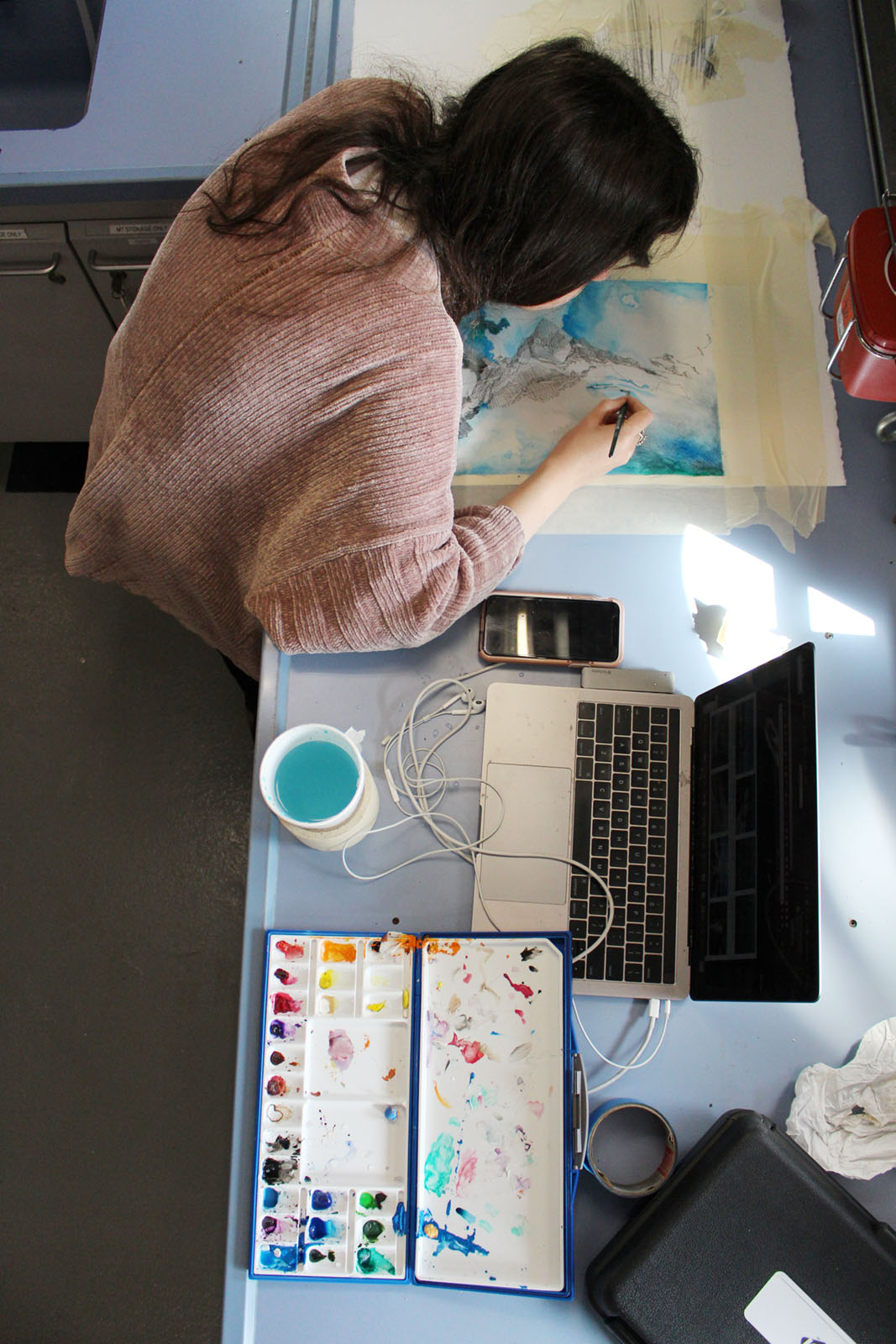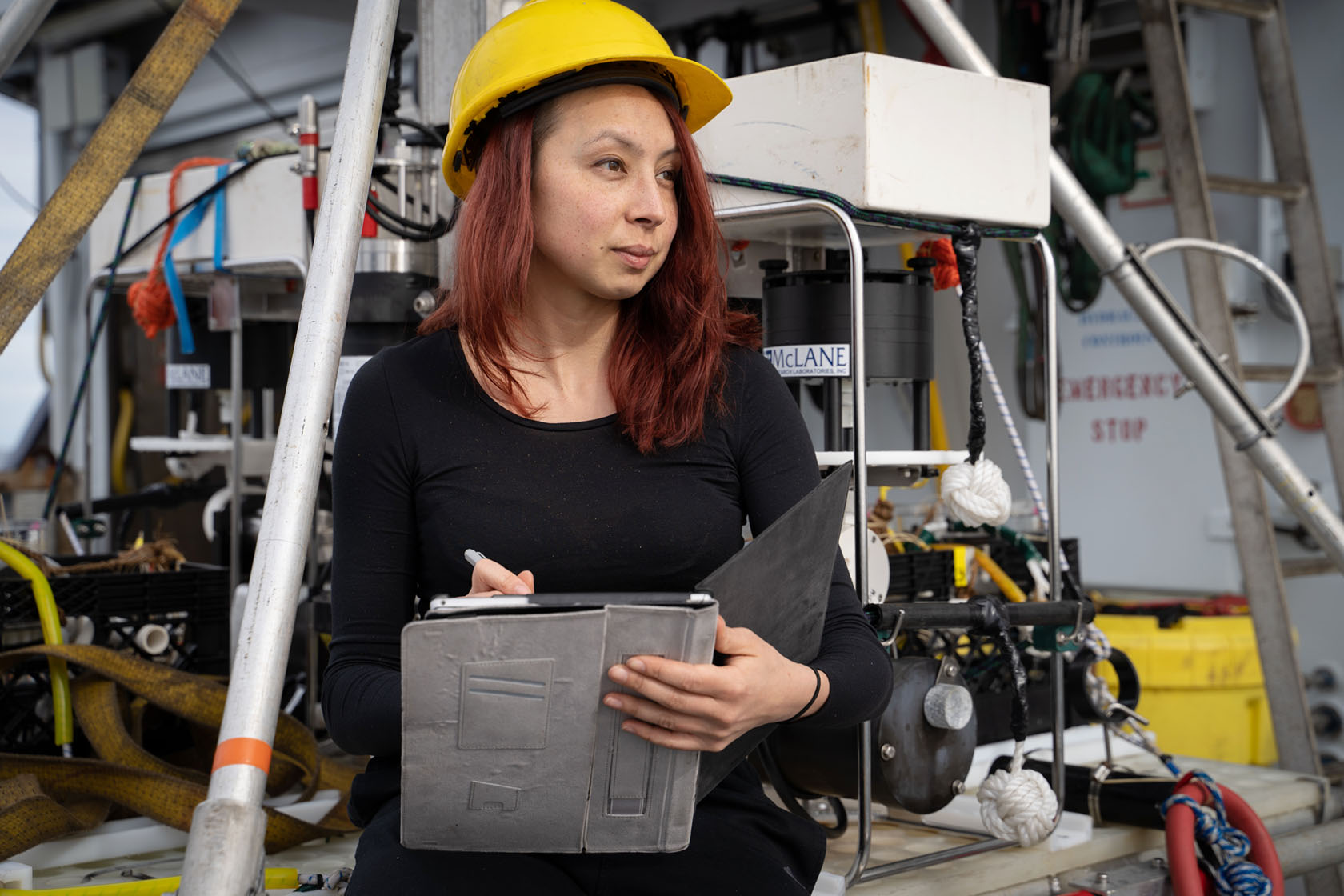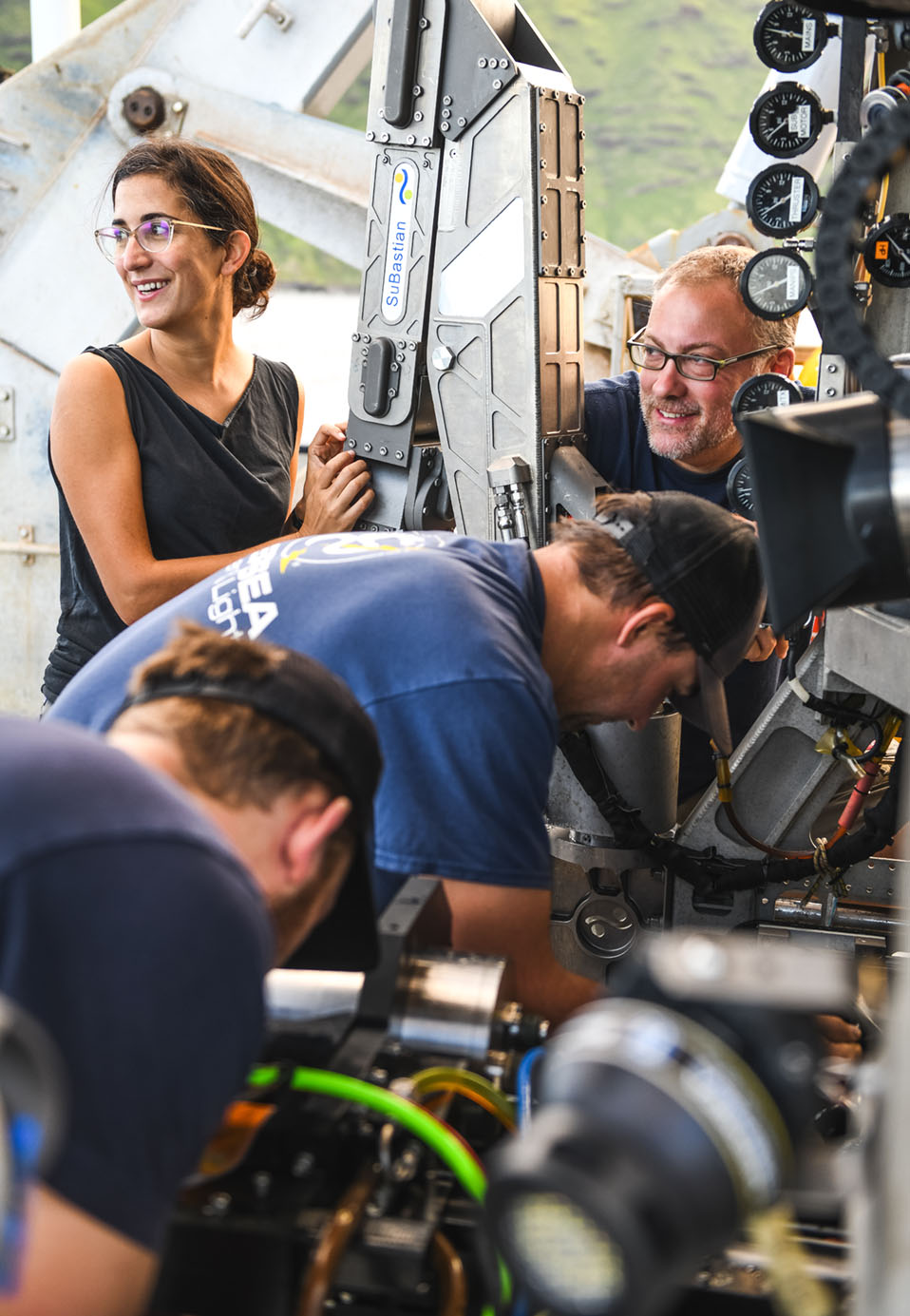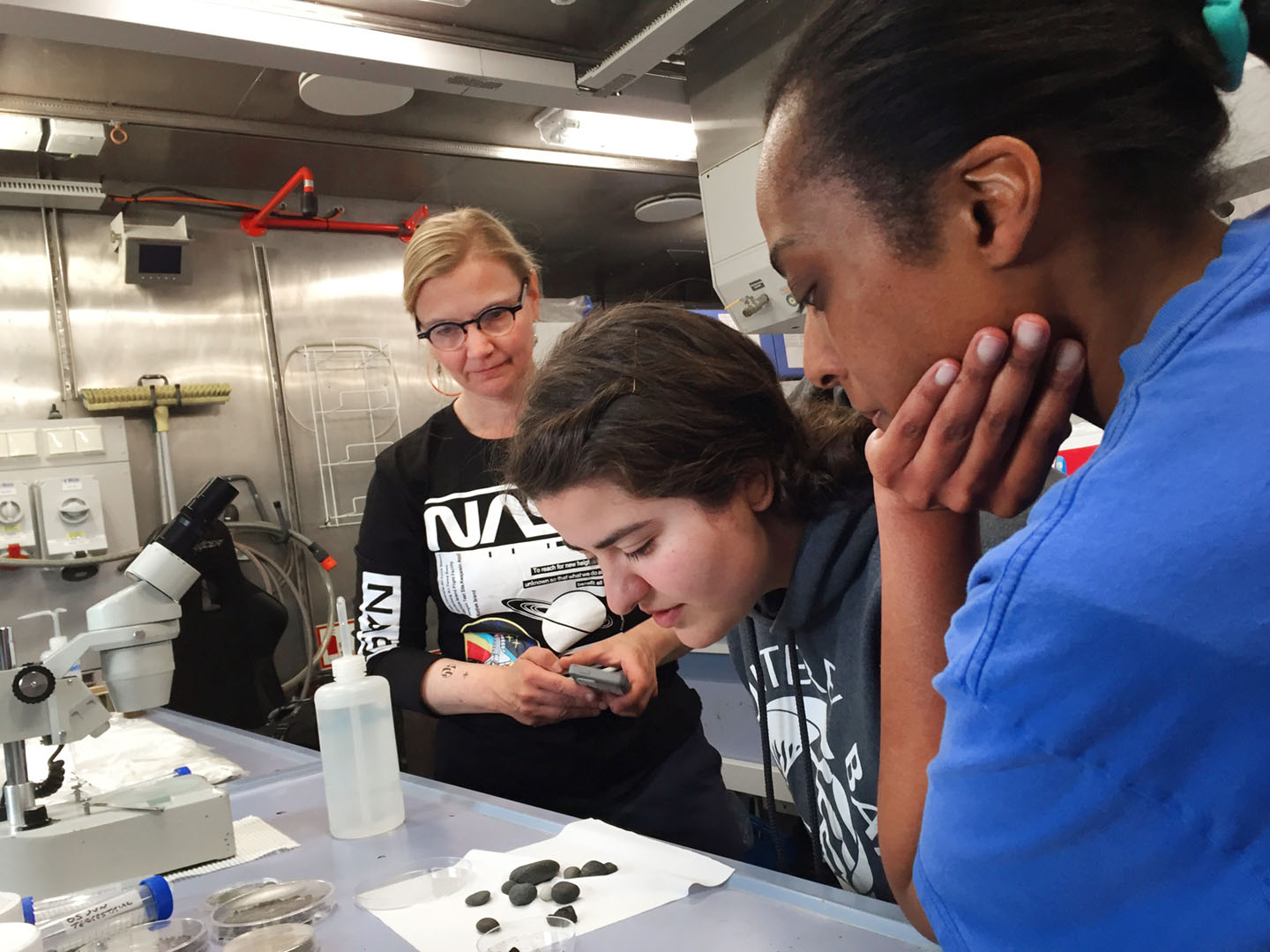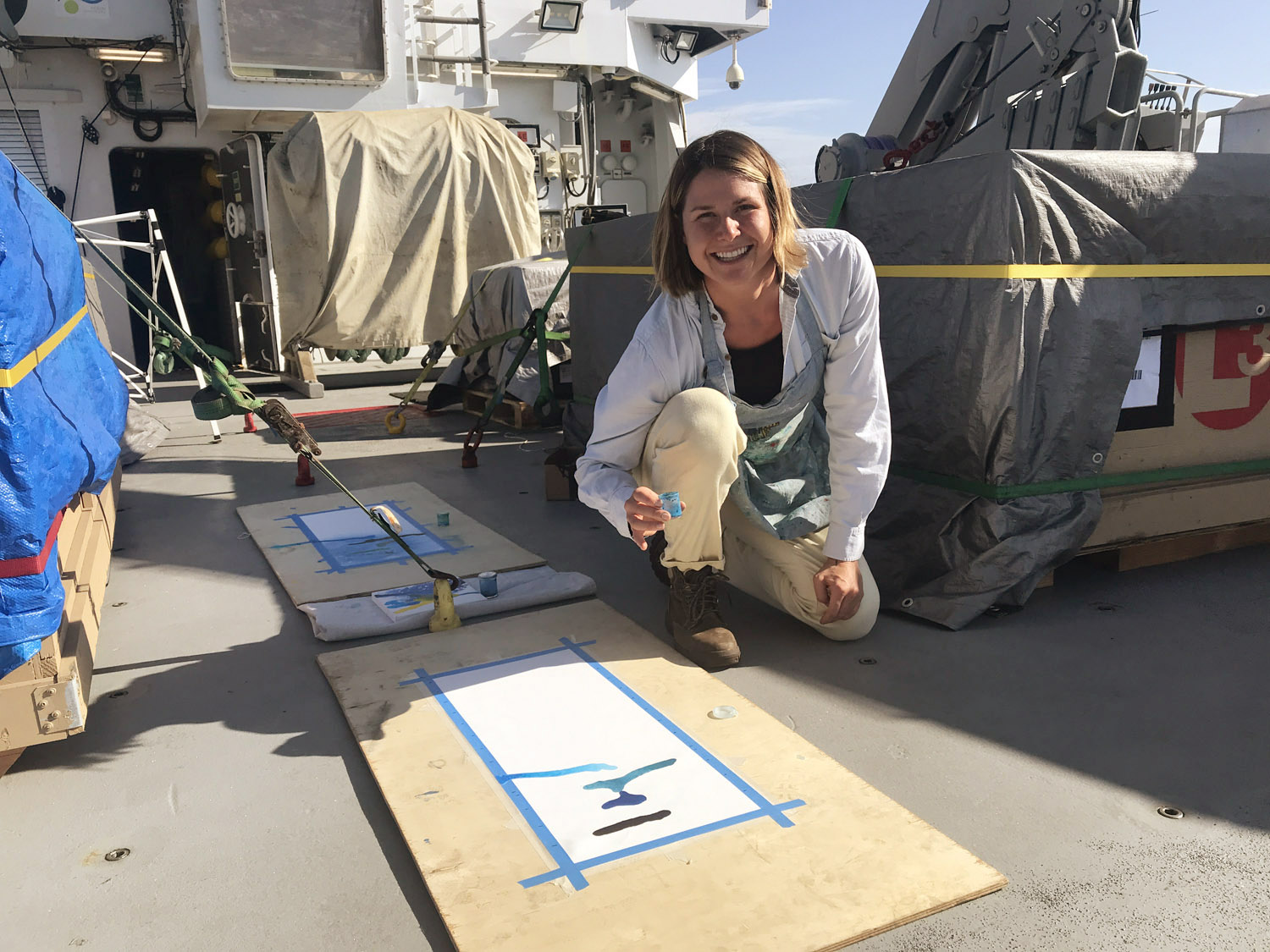“Building on the exchange of methods and practices alongside in-depth conversations with the scientific team, my creative process has become an experiment of my own”
– Adrien Segal, Artist-at-Sea
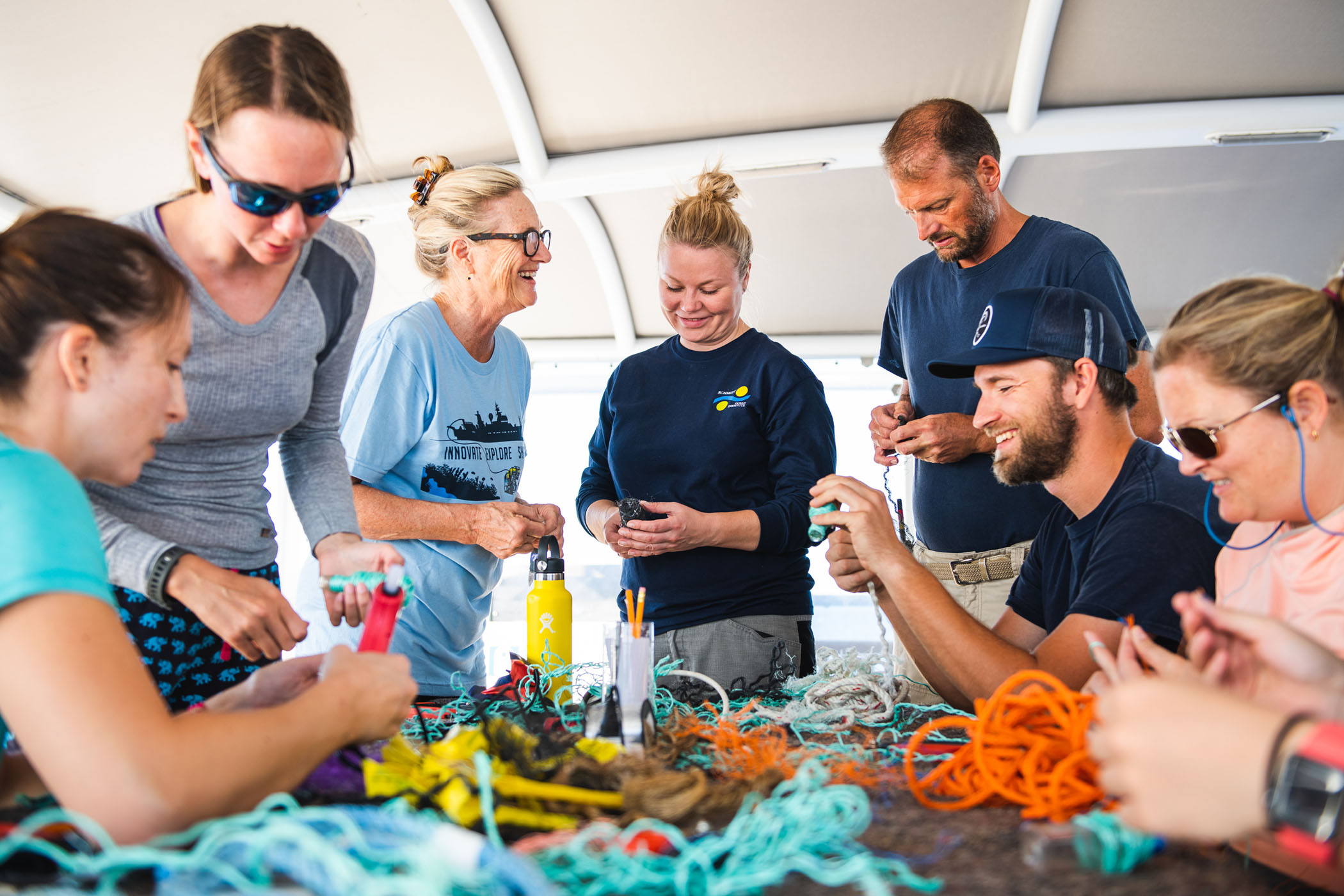
AT SEA CREATIVITY
SOI’s Artist-at-Sea program continues to expand with twelve participating artists in 2019, including a dedicated artist transit. The program collectively brings together the experiences of scientists and artists, allowing them to exchange knowledge, inspiration, and broadening perspectives.
Exemplifying the intersection of art, science, and technology, artists Alyson Ogasian and Shona Kitchen integrated their 3D printed designs onto the experimental cameras placed on ROV SuBastian. Another artist, David Bowen, used a CNC machine to carve bathymetry data into various substrates, while also using 3D printing to illustrate seafloor maps collected during his time on Falkor. In another approach to transforming complex ocean features, Christine Lee used oceanographic data to guide threaded shapes that describe coral structure. And artist Cindy Pease Roe created a ‘whale talisman’ constructed completely of collected debris to highlight the increasing problem of waste in the ocean.
The knowledge embodied by a selection of the art pieces was shared in several public exhibits at the Mokupāpapa Discovery Center in Hawaii and in collaboration with Science Gallery Detroit (DEPTH exhibit) at the Michigan Science Center. Both exhibits included grand opening events with artist participants. The DEPTH exhibit in Michigan also included several ship-to-shore connections with Falkor, an SOI hosted panel on ocean science art collaborations, and an experimental music performance by the Detroit Sound Bureau using ROV SuBastian footage at the Toyota Engineering 4D Theater.

EXPANDING EXPERIENCES
The continued work of previous Artists-at-Sea participants is also a testament to the power of the program. In 2019, artist alumni expanded upon their time aboard the Falkor with new pieces, exhibitions, and collaborations.
Artist Lauren Salm’s entire work has shifted to a more abstract style after being inspired by the seafloor mapping imagery she worked with while on Falkor. Not only has she created additional paintings surrounding the seafloor mapping theme, but she has recently partnered with Columbia University’s Lamont-Doherty Earth Observatory to put on an exhibit of bathymetry-inspired work in honor of the 100th anniversary of oceanographic cartographer Marie Tharp’s birth. Tharp was instrumental in creating the first scientific map of the Atlantic Ocean floor. Another artist, Adam Swanson, is now collaborating with researchers on Lake Superior organizing public talks and working on new pieces about water quality in the region. Gideon Gerlt’s time aboard Falkor inspired him to create a public art program in Alaska, while artist Bailey Fergeson’s experience motivated her to create a series of paintings that celebrate the complex biodiversity of coral reefs. Previous participant Rebecca Rutstien’s work has now been featured in several popular publications including Hakai, Muse, SciArt, and Vice Magazines.
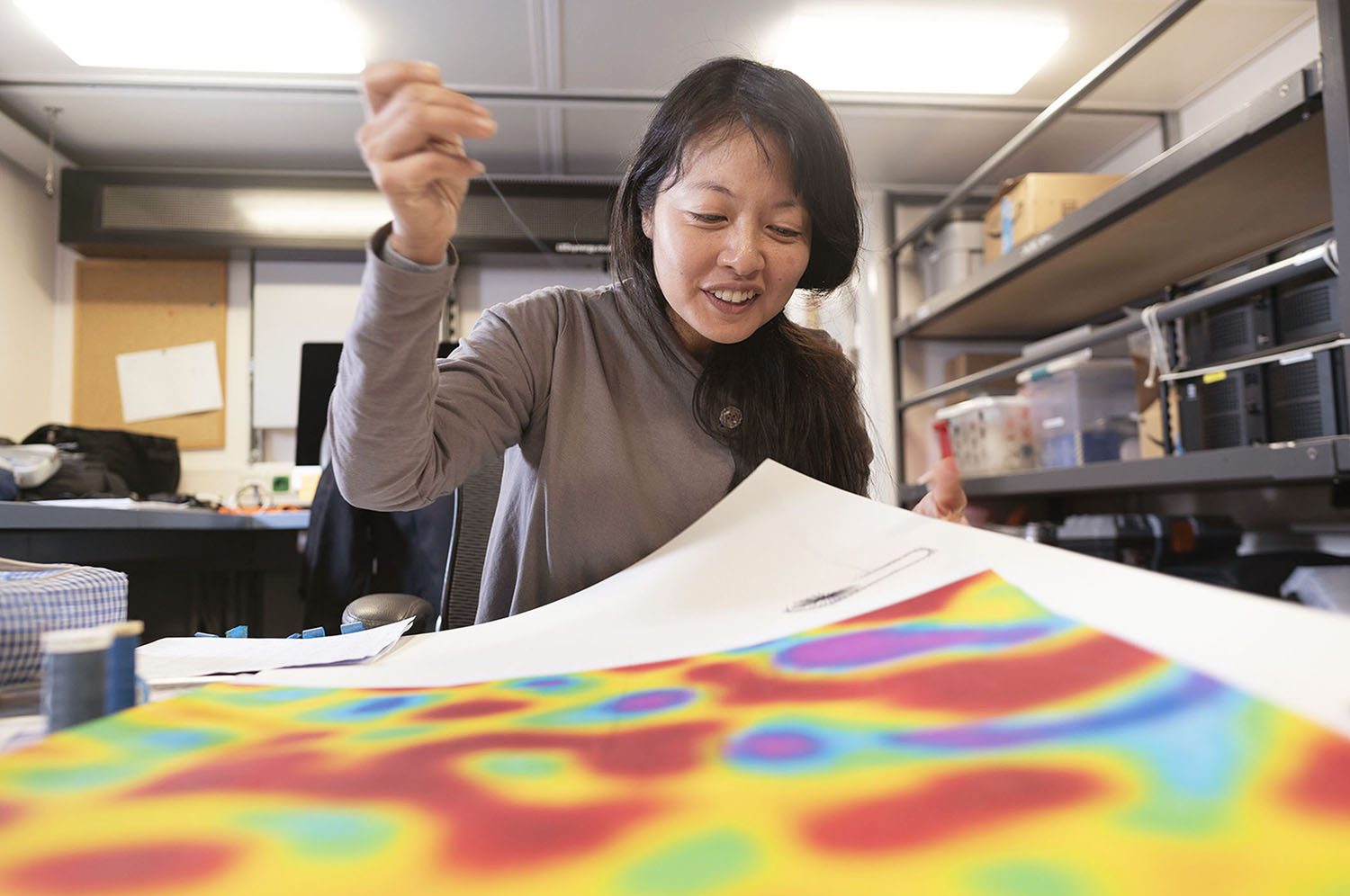
Scientists and artists who have worked together aboard Falkor continue to collaborate. Artist Lily Simonson and Dr. Peter Girguis have started a new project with Dr. Betsy Pugel of NASA based on their shared time during the 2018 Characterizing Venting and Seepage along the coast of California expedition. Previous program participants have also reached across expeditions, as Bailey Ferguson (2019) and Michelle Schwengala (2016) collaborated for an interdisciplinary art piece now on display in Los Angeles. The project was inspired by their separate times on board, the shared wonder of exploring, and the overall importance of protecting the deep sea.
